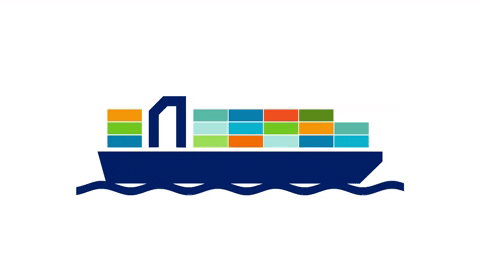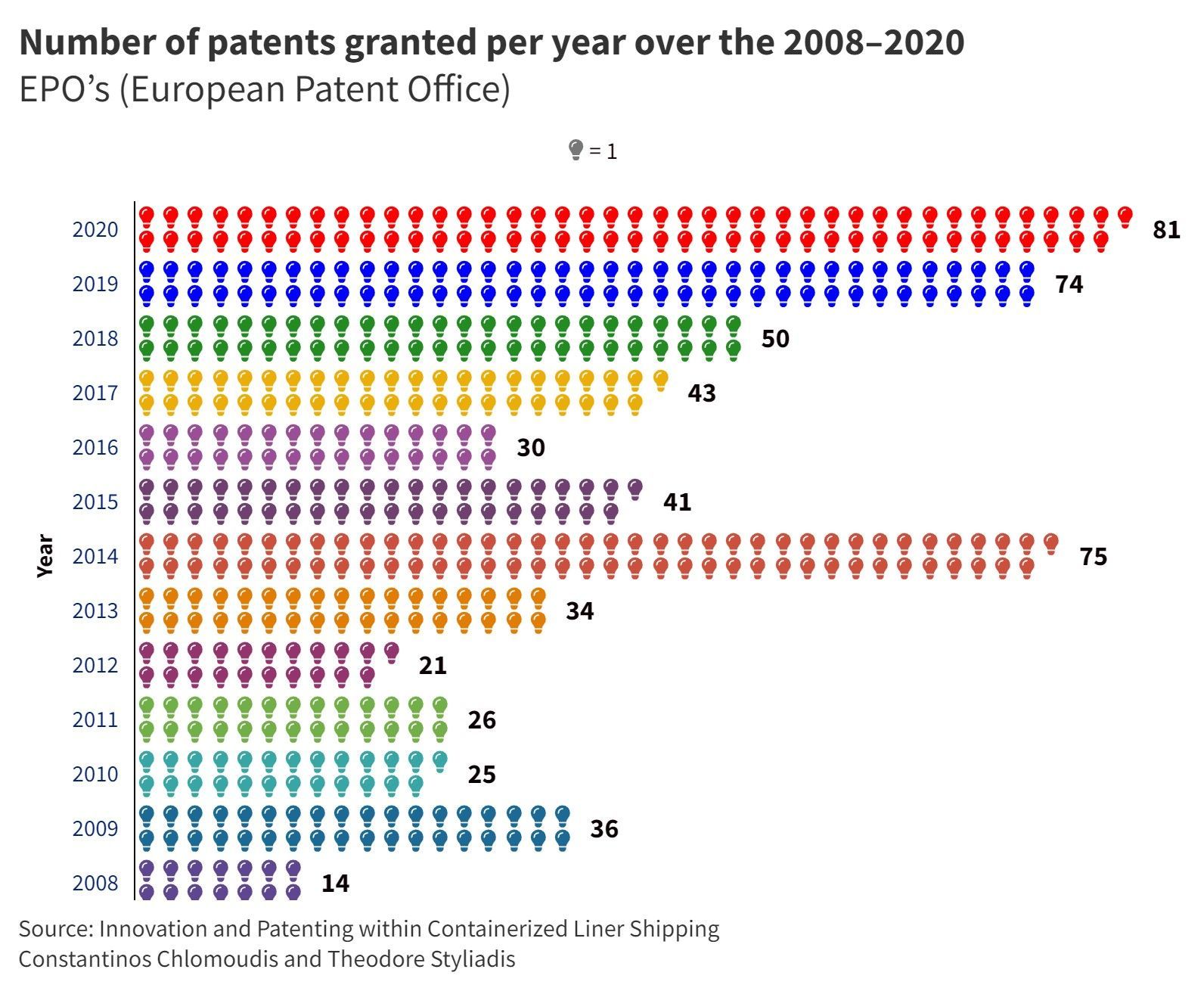The Innovation and Climate Challenge of International Shipping
International shipping industry is a backbone of international trade and the global economy.


International shipping industry is a backbone of international trade and the global economy. Each year, the shipping industry transports nearly 2 billion tons of crude oil, 1 billion tons of iron ore (the raw material needed to create steel), and 350 million tons of grain. These shipments would not be possible by road, rail or air.


Global container movement has shown a significant increase since the year 2010. The highest number of global containers move through China followed by the USA ports. In India, road freight constitutes around 63 percent of the total freight movement consisting of 2.2 million heavy-duty trucks and about 600,000 light-duty trucks annually. Road freight movement is expected to register a CAGR of 15 percent over the next five years. Sea freight consists of around nine percent of the total freight market and is mainly used as a major mode for imports and exports.

India has 13 major ports and around 212 non-major ports. In FY22, all major ports in India handled 720.35 million tonnes (MT) which was the highest of cargo traffic after FY20 in the last decade, implying a CAGR of 2.10% during FY10-FY22 and recording a growth of 7.09 per cent from the previous year's figure of 672.68 MT. According to the Ministry of Shipping, around 95% of India's trading by volume and 70% by value is done through maritime transport. Non-major ports accounted for 44.58% of the total cargo traffic at Indian ports in FY21 with a decreasing growth of 6.14 per cent, due to a significant shift of traffic from the non-major ports to the major ports. Cargo Traffic Import was reported at 414.25 MT in FY21. This records a decrease of 10 per cent from the previous financial year.

It is estimated that, globally, 80% of traded goods are transported by ship. Container shipping has become an emission-intensive industry that accounts for about 26% of CO2 emissions from international shipping, which in turn accounts for approximately 3% of global greenhouse gas (GHG) emissions.
Innovation & IP in International Shipping for SDG 13

The world’s top 20 leading shipping firms based on ranking, which is updated in 2022. The ranking is calculated based on TEUs (Twenty-foot Equivalent Units) which is the number of 20-foot shipping containers (or the equivalent) an international shipping company has the capacity to carry at one time. Many of the world’s biggest shipping companies belong to one of three top shipping alliances which represent over 77% of global container movement and 96% of East-West trade. The Mediterranean Shipping Company S.A. (MSC founded in Naples by Gianluigi Aponte in 1970) is one of the largest privately-owned shipping company. Not only does it have the most TEUs at 4,427,052, it has the second most ships (678). In terms of ships, it has 347 own ships and 331 chartered ships. A.P. Moller-Maersk Group is the second biggest shipping firm after MSC and one of the top shipping firms when it comes to international freight and cargo. In terms of size, it has a capacity of 4,272,092 TEU and has the most ships (739).


The graph below shows the patents granted (European Patent office) to the 10 largest liner shipping companies operating in the containerised segments of liner shipping over the 2008–2020 period. The highest number of patents were granted in the year 2020. Liner shipping is the process of transporting goods and cargo from one destination to another by large ocean ships that move through regular routes on fixed schedules.

Shipping industry is expected to change its fuel mix and use new technology and ship designs, alternative fuels and operational adjustments to cut its carbon and environmental footprint. The global shipping industry is responsible for 90% of world trade by volume. Amazon, IKEA and Unilever who announced a target of switching all of their ocean freight to vessels powered by zero-carbon fuels by 2040.Maersk’s recent announcement that it will launch a feeder ship in 2023 that will run on “green” methanol. Green methanol is a low-carbon fuel that can be made from either biomass gasification or renewable electricity and captured carbon dioxide (CO2). This is an exciting step, as the announcement could help to scale up climate-friendly methanol technology. If we are talking about green methanol that is synthesized from carbon dioxide and hydrogen, then we can actually achieve CO2-neutral combustion. Furthermore, methanol has some advantages concerning its emissions behavior: There are fewer NOx emissions and no SOx or soot emissions for pure methanol combustion. So there’s great potential for methanol to play a key role in the maritime energy transition. MAN Energy Solutions is developing methanol retrofit solutions for its four-stroke customers with which will be sales-ready from 2022 onwards, with retrofits starting in 2024.The simplest solution that’s been identified so far is a form of liquid fuel to replace heavy fuel oil. Big ships are not hi-tech in any way, they run on the dredge that can’t be used for anything else, the lowest quality fuel that's left over once you've refined products for other sectors, including what burns in our cars. And there are three options being explored: Biomass-derived fuels, so biofuel or biogas. Hydrogen and synthetic non-carbon fuels, like ammonia, for example, which are derived from renewable energy or from fossil fuels combined with CCS (carbon capture & storage).Synthetic fossil fuels, like e-methanol, that can be carbon-neutral based on the production process. Carbon neutrality describes a state in which the activities of an individual or an organization result in net-zero climate impact from greenhouse gas emissions. That means that either the activities must release no greenhouse gases or the emitted greenhouse gases must be balanced out by carbon offsetting measures. Blume Global, a leading provider of logistics and supply chain solutions empowered by the largest globally connected multi-modal logistics network, is now carbon neutral. To achieve carbon neutrality, Blume partnered with the South Pole, a leading climate solutions provider, and carbon project developer, to analyze Blume’s carbon footprint and offset 1,805 tons of Scope 1, 2, and 3 emissions. Blume offset these emissions by investing in a rooftop solar power project in New Delhi and a forest protection project in Kariba, Zimbabwe. The transport industry contributes to 7 percent of global greenhouse gas emissions. . Around a quarter of global CO2 emissions are due to fossil fuel combustion in the transport sector alone, according to the International Energy Association. For this reason, logistic providers are testing carbon neutral alternatives to transport customer’s goods. However, carbon emissions from transportation are not the only problem; warehouses can also reduce carbon-intense energy consumption and waste can be recycled more effectively Use recycled & recyclable packing materials Minimize the amount of overall packaging Avoid as much single-use plastic as possible.
For example, Daimler operates solar panels at many of their locations, and DB Schenker opened its first entirely solar-powered warehouse in Dubai in 2019. Other locations, such as Red Lion in Singapore, also use solar panels to reduce carbon emissions by 458 tons annually. Or rainwater is collected in harvesting tanks in Auckland, New Zealand, to be used in sanitary facilities throughout the building. Furthermore, the use of e-vehicles is becoming increasingly important. DB Schenker, for example, has extends its e-vehicle fleet in land transportation and is using cargo bikes for last-mile city logistics. To reduce carbon emissions in other business units, the company started using sustainable aviation fuel for carbon neutral flights between Frankfurt and Shanghai. To achieve a sustainable future, businesses must align their goals with the SDGs at the strategic as well as operational level. The goal of the Global Green Freight Action Plan is to facilitate collaboration among governments, the private sector, and civil society to enhance the efficiency of global goods movement in ways that significantly reduce climate, health, energy, and economic impacts. The Action Plan encompasses an evolving set of actions aimed at engaging stakeholders in support of three main objectives: aligning and enhancing existing green freight efforts; developing new green freight programs; and incorporating measures to control black carbon emissions into green freight programmes. Comprehensive green freight infrastructure should be planned, designed and built with climate resilience in mind. Climate change mitigation is a core principal of green freight and logistics, and without addressing the freight sector, global climate goals cannot be realistically met. Supply chain collaboration Supply chain collaboration (SCC) can be understood as any action or activity, vis-à-vis interaction, where actors and/or organisations achieve mutually beneficial outcomes by working in cooperative way. Scholars have argued that SC players’ efforts to collaborate for transportation can contribute to an approximately 26% decline in fuel consumption.

Technology Development in Indian Shipping industry
- The shipping industry is adapting rapidly to modern technologies with a focus on autonomy, the IoT and Data Analytics. IoT and increasing use of the cloud is enabling greater flow of information from ashore and better decision making afloat.
- The focus on autonomous systems is finding applications in the maritime domain. Autonomous merchant vessels are now in an active stage of development. Autonomous steering and navigation systems are being integrated with port traffic management schemes through AI and machine learning to facilitate smoother entry and exit of ships from congested ports and restricted waters. Smart ship technologies are being effectively applied for collision avoidance and safe navigation.
- Shipping is also set to gain from the increasing use of blockchain technology to enable better supply chain management with the ease of data transfer for tracking the movement of cargo.
- Hyper-loop Transportation System.
This IP Wave is written by Shivani (Sanrachna Foundation), Satyabrata (Sanrachna Foundation) and Bhupesh Upadhyay (Sanrachna Foundation).






